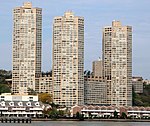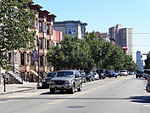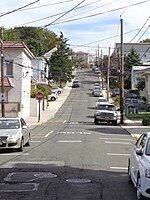WOR TV Tower
Demolished buildings and structures in New JerseyFormer radio masts and towersLattice towersMass media in Hudson County, New JerseyNew Jersey building and structure stubs ... and 3 more
North Bergen, New JerseyRKO GeneralTowers in New Jersey
WOR TV Tower was a 760-foot-tall (230-meter) lattice tower used for FM- and TV-broadcasting at North Bergen, New Jersey, USA. The 420-ton tower was built in 1949. At the time of its construction, it was the tenth-tallest man-made structure in the world. At the beginning of 1953, the TV transmissions were moved to Empire State Building, but the tower remained. On November 8, 1956, the top of the tower was hit by a small aircraft, which knocked off the top and killed six people. The tower was later dismantled.
Excerpt from the Wikipedia article WOR TV Tower (License: CC BY-SA 3.0, Authors).WOR TV Tower
Bergenline Avenue,
Geographical coordinates (GPS) Address Nearby Places Show on map
Geographical coordinates (GPS)
| Latitude | Longitude |
|---|---|
| N 40.797859 ° | E -74.009528 ° |
Address
Bergenline Avenue
Bergenline Avenue
07093
New Jersey, United States
Open on Google Maps









